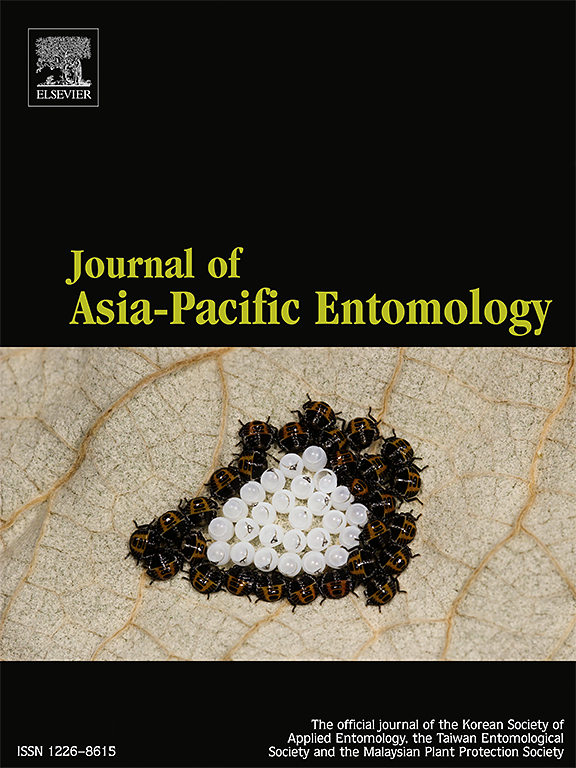无翅和有翅三种非寄主交替蚜虫对植物挥发性化合物的不同电生理反应
IF 1.3
3区 农林科学
Q3 ENTOMOLOGY
引用次数: 0
摘要
从春天到秋天,蚜虫产生两种无性形态:无翅和有翅。有翅虫在远距离寄主植物选择中经常利用嗅觉线索,无翅虫在近距离寄主植物定位中经常利用嗅觉线索。记录了无翅和有翅的英国谷物蚜虫、绿蝽Schizaphis graminum和豌豆蚜虫Acyrthosiphon pisum对一系列植物挥发物的触角电信号(EAG)反应。三种蚜虫的反应模式相似,但也存在一些差异。(E)-2-己烯醛在无性形态(即无翅和有翅)中都引起了最大的EAG反应。一般来说,绿叶挥发物和苯甲醛产生较大的egg。除4-乙基苯甲醛、己醛和乙酸苄酯外,有翅型对所有植物挥发性化合物的反应都比无翅型强。本研究表明,avenae、S. graminum和a . pisum都能检测到各种挥发性化合物,有翅的S. graminum和a . pisum具有更高的EAG响应,表明它们比无翅的S. avenae具有更灵敏的嗅觉系统,能够更好地适应在不利环境条件下切换寄主植物。本文章由计算机程序翻译,如有差异,请以英文原文为准。

Differential electrophysiological responses of wingless and winged forms of three non-host-alternating aphids to plant volatile compounds
From spring to autumn, aphids produce two types of asexual morphs: wingless and winged. Olfactory cues are often utilized by the winged morph in long-distance host plant selection, and by the wingless morph in short-range host plant location. Electroantennogram (EAG) responses to a range of plant volatiles were recorded from wingless and winged forms of the English grain aphid Sitobion avenae, greenbug Schizaphis graminum, and pea aphid Acyrthosiphon pisum. The response patterns of the three aphid species were similar, although some variations did occur. (E)-2-Hexenal elicited the largest EAG responses in both asexual forms (i.e., wingless and winged) of the three species. In general, green leaf volatiles and benzaldehyde produced relatively large EAGs. The winged form was more responsive than the wingless form to all the plant volatile compounds tested but 4-ethylbenzaldehyde for S. graminum, and hexanal and benzyl acetate for A. pisum. This study indicates that both forms of S. avenae, S. graminum, and A. pisum are able to detect various volatile compounds, and generally higher EAG response in winged forms suggest that they have a more responsive olfactory system than wingless forms, and are better-adapted for switching host plants under unfavorable environmental conditions.
求助全文
通过发布文献求助,成功后即可免费获取论文全文。
去求助
来源期刊

Journal of Asia-pacific Entomology
Agricultural and Biological Sciences-Insect Science
CiteScore
2.70
自引率
6.70%
发文量
152
审稿时长
69 days
期刊介绍:
The journal publishes original research papers, review articles and short communications in the basic and applied area concerning insects, mites or other arthropods and nematodes of economic importance in agriculture, forestry, industry, human and animal health, and natural resource and environment management, and is the official journal of the Korean Society of Applied Entomology and the Taiwan Entomological Society.
 求助内容:
求助内容: 应助结果提醒方式:
应助结果提醒方式:


